Have you ever seen one of the “Army Strong” commercials? Well in the UK, there’s no stronger or more capable military unit than the Royal Marines (even though they’d be quick to point out that technically they’re part of the British Royal Navy, not the Army.) Entry into this elite commando group requires making it through a selection process every bit as grueling as the Navy SEALs’ notorious Hell Week. Only a handful of recruits making it through.
One of them is Irishman Ollie Quinn, who went on to conduct ground operations in Afghanistan and Libya, and worked as an anti-piracy boarding team member off the coast of Somalia. As he was getting out of the service, a chance encounter with StrongFirst CEO Pavel Tsatsouline changed the trajectory of Ollie’s training, career, and life. Since then, he’s gone on to achieve his SFG Level I and II certifications, be promoted to a StrongFirst Certified Team Leader, placed first in the Elite division of StrongFirst’s global Tactical Strength Challenge, and become one of only two men in Ireland to complete the notorious StrongFirst Beast Tamer challenge. He also won a national deadlifting contest and qualified for the open division final of Ireland’s Strongest Man. We caught up with Ollie, now based in Texas, to discuss his transition from powerlifting to kettlebell training, the benefits of the StrongFirst approach for tactical athletes, and the strongman secrets of the bent press.
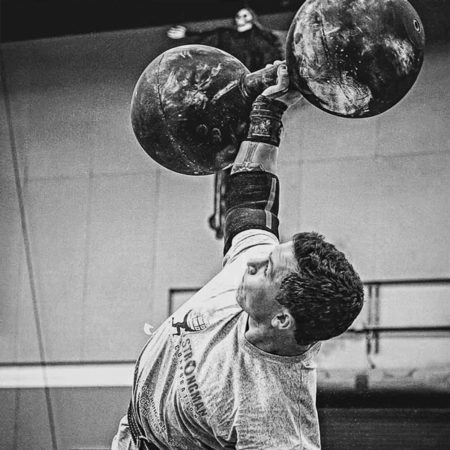
Why did you decide to join the Royal Marines after finishing your training as a plumber?
Growing up, I made my own fitness equipment, with a lot of help from my dad, and was into boxing. I’ve always wanted to test myself and the idea of being part of something elite appealed to me. After I finished my plumbing apprenticeship, I first tried to join the French Foreign Legion. I flew to Paris, handed over my passport, and was all ready to go. But during my medical, the doctor thought he found a heart problem. He told me to go back to Ireland and have it checked out. (It turned out to be fine after an ECG.) Around the same time, I found out that I was eligible for the Marines, so I decided to go that way instead.
How did you stay in shape while deployed?
In the Marines, when not on base/camp, you learn to create your own gym by lifting whatever heavy stuff you can get your hands on, putting a stick in a doorway as a pull-up bar, and so on. If we were on a base, we’d run on the aircraft runway. Me and a couple of others were into bodybuilding, so we’d do a lot of leg presses and back squats when the equipment was available, usually doing sets of 10 or 15 reps. It was hard not to overdo the training though because we had to be ready to go with our unit.
One time, I’d done a hard leg session on camp in Afghanistan. The next day, of course, we had to go out on the ground—the terrain was mostly muddy fields—carrying a heavy pack, a lot of water, a machine gun with 1000 rounds, a rocket launcher, etc. We came under contact. My legs were just toasted and wouldn’t do as asked. I realized that I needed to dial it (my training) back a bit. When we were on a ship though, “operation massive” was in full swing. We could train more because we didn’t have to run as much. We’d get up early, do our bodybuilding work, eat, do some more training, take a nap, and then do some bodyweight exercises and sprints as a group circuit in the afternoon.
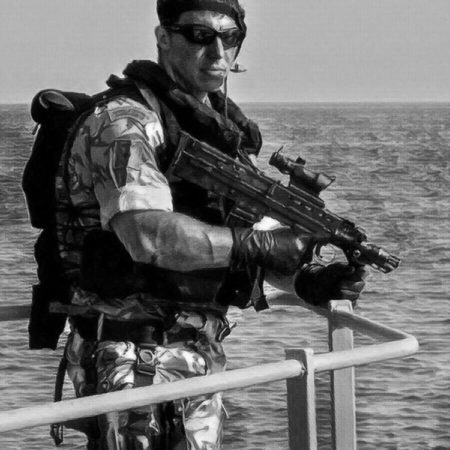
When did you meet Pavel and what impact did he have on you?
I met him while I was transitioning out of the Marines. I was on an anti-piracy team that was training in Scotland at the time. I was getting injured a lot, and squats and deadlifts were hurting my back. That affected the running we had to do as well. I’d found a couple of kettlebell training plans designed for powerlifters, but was only scratching the surface. After I met Pavel, I signed up for his course at Paul McIlroy’s Centaur Gym in Belfast and flew back to Ireland for it. Pavel’s approach was a real eye-opener for me. I realized that I’d been doing everything wrong up until that point. I’d never thought about how to create tension, where to place my feet, or how to keep my knees aligned. Pavel had tried and tested every little detail.
What changes did you make in your training after the course?
Pavel showing me how to do the swing and get-up correctly changed everything. I stopped practicing the power lifts for a while and just focused on my technique in those two exercises. Then I added dips, single-arm presses, pull-ups, snatches, and squats, still not using a barbell. The get-up was huge for my mobility and the swing really improved my conditioning. I’d press and squat two or three times a week, do swings and get-ups in between. Suddenly my back wasn’t hurting anymore, I was much more flexible, and I could express my strength without pain.
When did you decide to share what you were learning with others and become a StrongFirst coach?
I was starting to see great results in my training and began training a few people out of my garage. When I saw the benefits they were experiencing, I decided to open my own gym—Battlebells. Most people were blown away by the StrongFirst way of doing things. They’d been used to machines or bodyweight training, and a few were powerlifters. But like me, they’d never been shown how to hinge, brace, breathe, and so on, correctly. There’s only one right way to do most things, and StrongFirst was the first to teach people how to use kettlebells and move their bodies properly. I learned that you can train hard and smart without beating your head against the wall—doing the same stuff and expecting a different result as I used to. StrongFirst can help you be stronger for longer.
What benefits does kettlebell training have for tactical athletes?
It’s huge for conditioning, explosiveness, mobility, strength, and power. Then there’s the portability factor. You can put a kettlebell in the back of your car or even take it on certain flights, and it doesn’t take up much space. When you’re in the military, you can’t have access to a gym all the time, so a minimalist approach is needed. The kettlebell is as minimal as equipment can get. You need to be ready to get somewhere quickly, climb something, and help someone at a moment’s notice, and the kettlebell gets you ready to do that. I’d rather have someone on my team who can move two 40-pound bells in a complex than a guy who has a huge bench or squat.
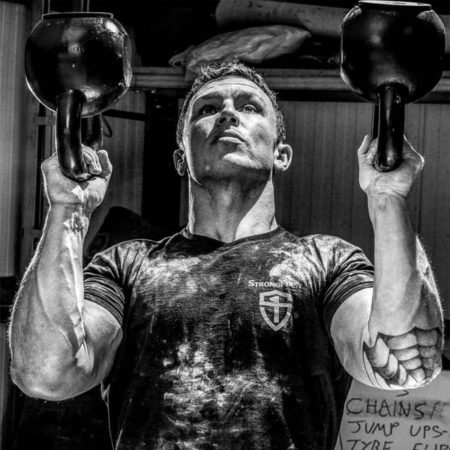
You won the Elite division of the Tactical Strength Challenge and have participated in other StrongFirst tactical programs. What have you enjoyed most about them?
When it’s an in-person event, it’s good to get together with like-minded people who enjoy lifting that way and challenging themselves physically and mentally. For the Tactical Strength Challenge, doing 100 snatches with a 32kg kettlebell was one of the hardest things I’ve ever done. As you said, I won the Elite division the first year with 100 reps. Then I trained like a maniac for a whole year, expecting to increase that number. The next time I only got 101, which shows how difficult it actually is.
If you could only choose three exercises to train with from now on, what would they be and why?
First, I’d have to go with the get-up. If I could only choose one exercise, this would be it because it requires you to get into multiple different positions with strength and control. It knits everything together because you have to use your legs, upper body, and core as one. It also helps with overhead exercises like the press and snatch and opens your hips up.
Second would be the two-arm swing. It requires a lot of hip power and explosiveness and is a great strength and conditioning tool.
Third, I’d have to go with the bent press. It’s the best way to get a lot of weight overhead with one hand and forces you to be coordinated and flexible. I didn’t learn the movement until I was preparing for the SFG II cert, but once I understood it, I was hooked. People can be a bit intimidated by it, but if you can master the get-up and the windmill, you’ll be able to get it down. You’ve got to hinge, rotate, and get under the weight. I’ve actually used the bent press in strongman contests before and have won the event because the technique allows me to go heavier than with a regular press. A friend of mine told me recently that he’d seen the bent press listed as one of the events in an upcoming strongman contest and said it was probably because of me. I replied, “No—I wanted that to still be my secret weapon!”
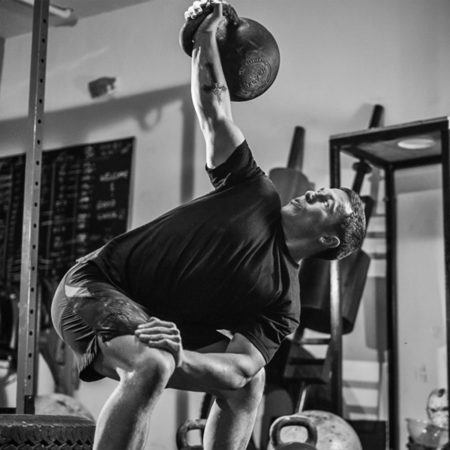
Speaking of which, how does kettlebell training help you prepare for strongman contests?
Outside of the bent press, it’s all about mobility, stability, and conditioning. There are strongman kettlebell programs out there that are decent, but you must practice with the implements you’ll be using in competition. Unfortunately, kettlebells don’t come up very often. When I’m preparing for strongman, I do snatches and swings for 10 minutes on the minute and use goblet squats to warm up for heavy back squats. Then I’ll do some TGUs before log presses/dumbbell presses, and rack carries before sandbag carries.
When a new student comes to you with no kettlebell experience, what does the on-ramp look like?
We’ll start with basic concepts—how to hinge, squat, breathe, and brace. Then I’ll teach them how to do a bodyweight get-up. After that, we’ll go to kettlebell deadlifts to reinforce their hinging, and when they’re ready, we progress to two-handed swings. I’ll also have them do planks, bird dogs, and hollow holds to work on their core strength. We’ll stick to the basics three times a week for about a month. Then we’ll add in a little more volume once they’ve got the techniques down; then a bit more weight. As Pavel says, “Fatigue is rarely a good teacher,” so I don’t have people go to failure. Quality is key.
What do you like best about coaching?
I want other people to get out of kettlebell training the same things it did for me—making me feel stronger, fitter, and more mobile. After six months I’d changed everything, and I like seeing that in my students, too. When someone aces a snatch test or gets a heavy press for the first time, that’s the good stuff. It makes me happy to see others succeed. To get them to that point, I have to get them to trust the process and be more patient. Many people want to just do bench presses or deadlifts, or try some fancy exercise they’ve seen online. For me, it’s a matter of giving them a little bit of what they want so I can give them a lot of what they need.
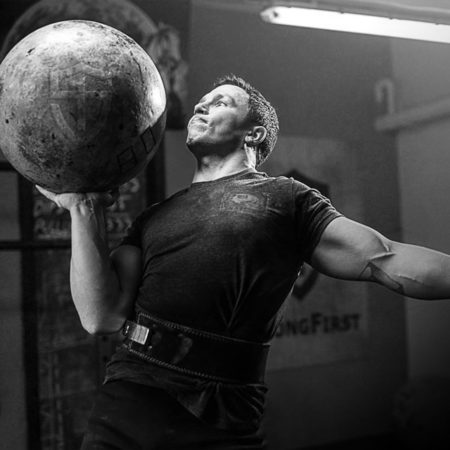
How would you define a life well-lived?
One of the most important things is trying to find your true calling. It’s hard to do that these days because there’s so much pressure on people to succeed. They think they have to go to school and study this to get that job, but then come out with all this debt and have no clue what they are truly meant for. I think you should do something you’re passionate about because it will make you happy. And do it with a lot of love. That can create a ripple effect that spreads outwards. We all have a unique gift that we should share with others. Society defines success by financial measures, so we’re all chasing another dollar. But after you have enough to live comfortably, more money won’t make you any more content. We need to find other ways to live fulfilling lives.
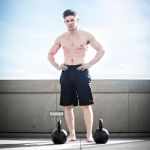

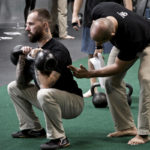
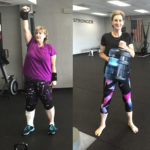
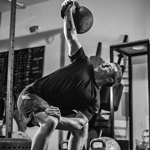

That marines photo looks like a Van Damme movie still.
Just a pair of 40-pounders (2×18kg) in a complex? Is that correct? Very reasonable.
Getting some real girevik talent in Ireland! I’m signing up for the one day KB course after I get an ankle operation. Pity Ollie is away to the states but what gym would he recommend?
100x32kg snatch in 5min is superhuman.
This Ollie isn’t just a beast tamer…. he IS a beast!
I’ve been doing Simple & Sinister recently and I’ve been thinking about alternating get-ups with bent presses. I was pleased to see that the 3 movements that I personally want to train (swings, get-ups and bent presses) just happen to be Ollie’s favorites as well 🙂
Great article and good advice. 🙏